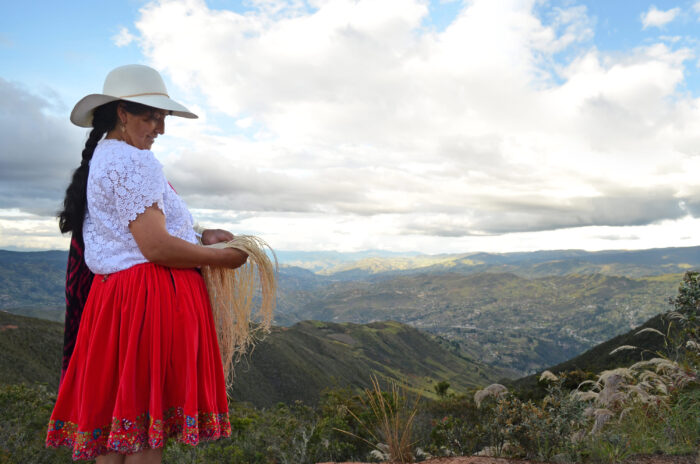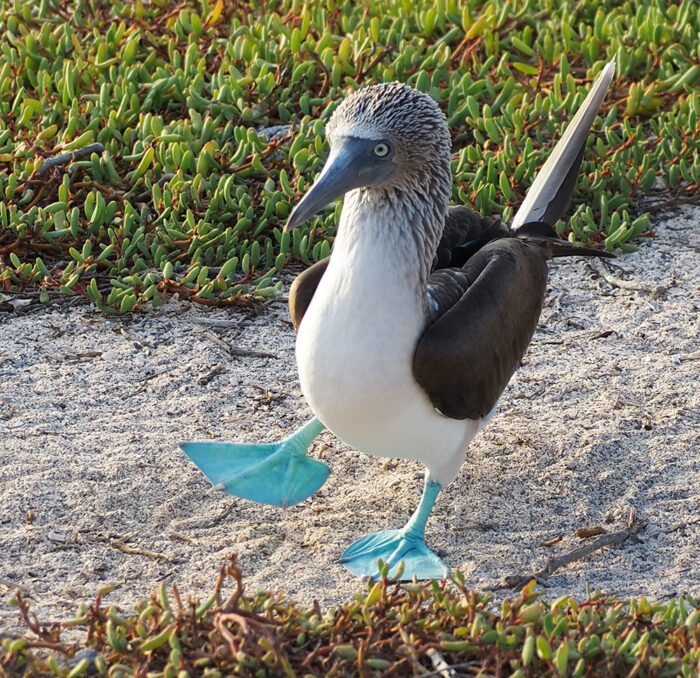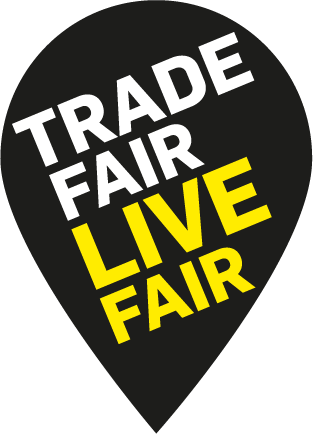Tomorrow I will be joining eXXpedition to sail some 2000 nautical miles from the Galapagos to Easter Island as part of an all-female Round the World voyage to gather the first global dataset of microplastic and microfibre pollution. From Ecuador to Chile passing by Peru and Bolivia, we are sailing past the cultures and communities I studied for my MA in Native American Studies, and subsequently worked with for over 20 years with my brand Pachacuti.
The Andes mountains run down the spine of the Pacific coast of South America. Andean philosophy sees all individuals as being part of a community, an ayllu. Humans are not separated from the natural world; they are two parts of a whole, each dependent on the other and giving to the other through a reciprocal relationship which sustains the community. The ayllu does not have fixed physical borders but is formed from the complex interlinking of relationships and an understanding of the fundamental interconnectedness of my interests, your interests and the interests of plants and animals. The ayllu is a place of nurture and regeneration and is seen as the basic cell of life. People, plants, animals and the earth itself nurture and are nurtured in a symbiotic relationship.
In indigenous cultures around the world, and particularly within indigenous cultures in the Americas, it is common that nature speaks. Ecuador has drawn from its indigenous past and became the first country in the world to legally recognise the rights of nature in 2008. It has given nature back its voice.
Last week I talked to Zapotec textile artist and weaver Porfirio Gutierrez from Teotitlán del Valle, Oaxaca, who explained that in his culture’s traditional philosophies, the plants are just like us. His parents would take him up into the mountains to collect plants for dyes and his father would talk to him about how they needed to have respect for the plants and trees because they are alive, just like us, and no life is more important than the other. “These days when everything is fast, everything is chemical, everything is plastic, we are forgetting the principles of being a human being, the slow way of living, the growing of food, making a textile. To me it is really important to create a conversation around that and educate people, and re-educate people”.
As I worked on the research for this year’s Fashion Transparency Index, I saw company report after report, referring to the preservation of natural resources, but even in attaching the word resources to nature we are effectively commodifying the planet, protecting it to support ever-increasing productivity. When studying Quechua, I learnt that there is no word for possession in the language. You cannot say ‘I have’. Everything you have or possess – not just goods and resources but also power and authority – are instead either with you, or not with you, meaning you are the steward, not the owner. This way of thinking changes everything.
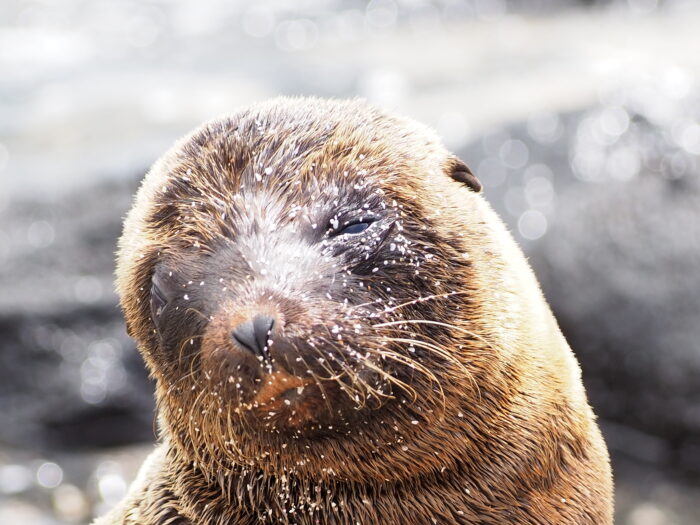
Our challenge this decade is to move beyond our currently destructive Western worldview which is tipping us into a climate crisis and a plastic pollution catastrophe, towards a fashion industry which integrates nature in a truly sustainable way. We need our legislators to learn from the law passed in Ecuador and restore a voice to the oceans, earth and all that live in and on them. We need brands and retailers to move from competitiveness to collaboration and from the commodification of natural resources to working alongside nature in all her diversity in a way that is respectful, renewable and regenerative. We need them to look at longer lasting value systems than profit, prioritising instead the protection of our ecosystems and the wellbeing of our communities. And as citizens who have lost touch with the reality of living in mutual nurture and interdependence with the natural world, we need to rebuild our connections with how our textiles and clothes are made, the slow way, in balance with plants, animals, earth and water.
I believe that transhistorical community value systems can present a powerful counterpoint to the logic of generating profit now and help us to once again rediscover the spirit of the ayllu.
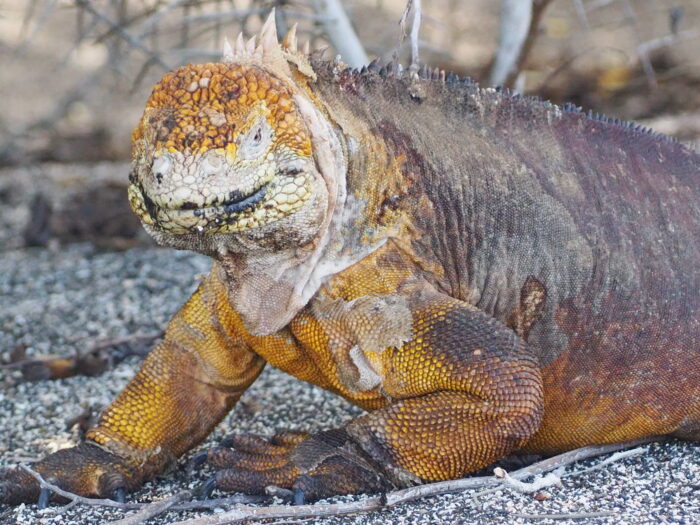
There are three things I have been passionate about over the course of my life: sailing and the sea, the indigenous cultures of South and Central America, and creating a more sustainable fashion industry.
Working with Pachacuti, the hat brand I founded over two decades ago, and at Fashion Revolution over the past six years, has brought together the latter two areas in many ways, but now I am incredibly excited to be able to draw all three of these strands together. In February and March 2020, I will be setting sail with eXXpedition to investigate plastic pollution and toxics in our oceans. Almost 10,000 women from around the world applied to take part in the two year voyage and I feel incredibly fortunate to have been selected to crew on the leg from the Galapagos to Easter Island.
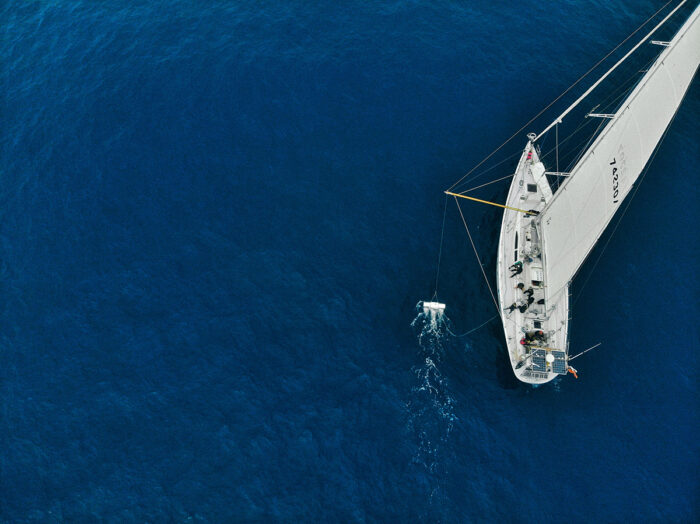
I learnt to sale on the magnificent J-Class yacht Velsheda in the late ’80s and spent a few summers as crew before jumping over to the square rigged brig TS Astrid on which I spent many happy months sailing the Channel and taking part in the Tall Ships Race. I then worked on various boats in the Caribbean for a year and sailed across the Atlantic on the tops’l schooner TS Unicorn. I remember night after night on the seemingly pristine sea watching the glowing, glittering phosphorescence resulting from the bioluminescence of organisms in the surface layers of the sea (we took two months crossing the Atlantic so there were plenty of sea sparkle nights to enjoy!) I never imagined that I would be sailing the oceans again three decades later to carry out research into the degradation of the marine environment.
My Masters in Native American Studies at the University of Essex was the culmination of an interest in the Andean region which stemmed from somewhere far back in my childhood – I remember asking for a picture book about the Incas as a Christmas present one year when I was still quite young. I immersed myself in learning about indigenous cultures past and present and would have continued with my PhD on the symbolism of colour and natural dyes in the Andes. However, having set up Pachacuti in the summer holidays and seen at first hand the real difference fair trade could make to textile-producing communities in Ecuador, I decided to turn my interest in the region to more practical use.
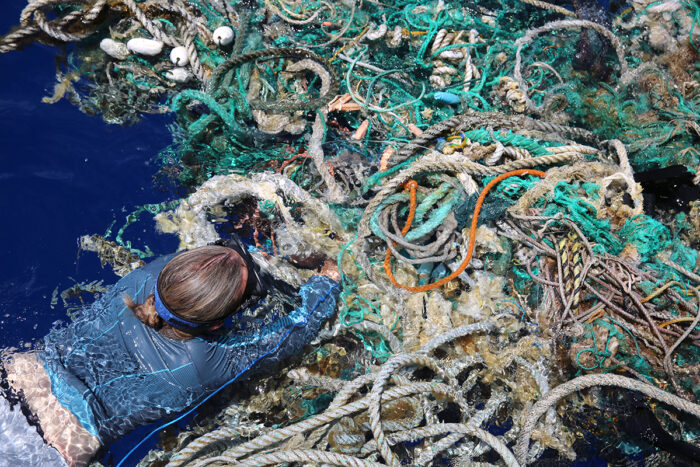
One of the key concepts of the Andean worldview is ayni, meaning reciprocity and balance. Balance does not mean just a static equibrium; the Inca strived for the creation of an animated cosmos through a system of continual exchange based on mutual respect, justice, and solidarity. They saw reciprocity as the foundation for peace, resilience and enduring relationships with our environment and our community both near and far. Ayni was a continuous accompaniment to life in the Andes and the foundation on which society was based. Indeed, life itself can be seen as ayni.
If the equilibrium between communities and the natural world was altered, it could result in floods, or lack of rains. Andean peoples understood that ayni has to be recreated every day in order for regeneration to take place and, as a result, knew that they needed to give things up, to make sacrifices to restore balance. Reciprocity moves people beyond self interest in order to do something for the common good.
Perhaps it is not surprising that in 2008, Ecuador became the first country to legally recognise the rights of nature and two years later Bolivia adopted the Law of the Rights of Mother Earth. This means in practice that people can now sue on behalf of the ecosystem. The Ecuadorian Constitution says this will help to “achieve the good way of living, the sumac kawsay.” Nature is part of the social fabric of life, not a resource to be exploited. The Andean concept of good living or living well doesn’t mean living better than others, nor does it imply the accumulation of material wealth. It means living well together, with nature, with mutual support, with ayni.
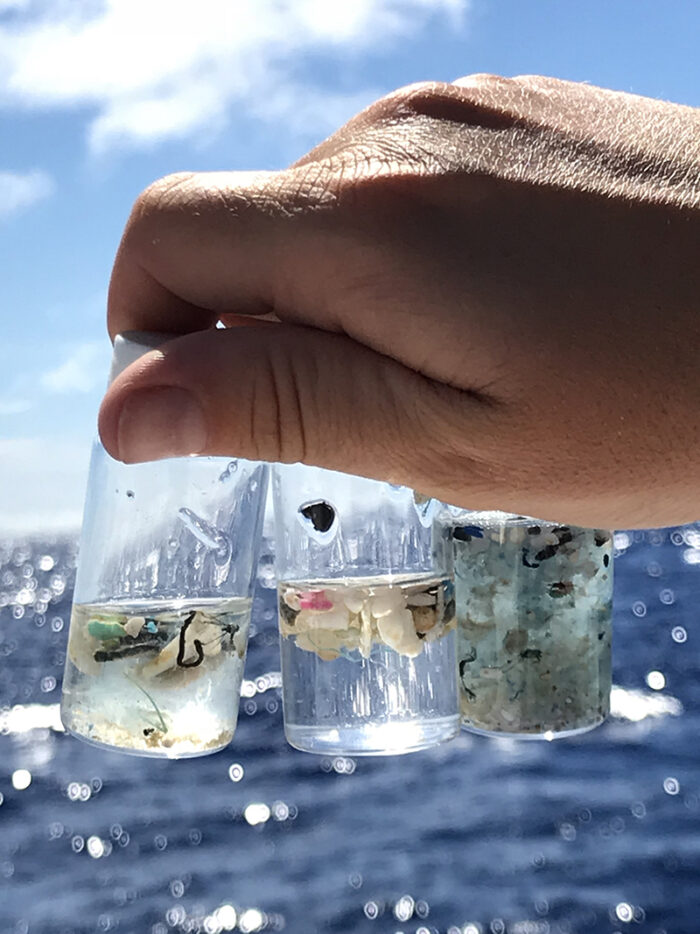
I was reminded of this whilst on holiday this summer, in a chalet by the sea on Branscombe beach in Devon. I was working there with my daughter, Sienna, and we were discussing stakeholders for Fashion Revolution’s policy dialogue toolkits. She told me that we must make sure we include stakeholders who don’t have a voice like the ocean and marine life. It seemed so obvious once she said it and I was astonished I had never previously thought of including them. This just emphasised to me how far we have become detached from seeing our world as a living being.
Reciprocity is inherent in the way the earth works, although there are limits that are difficult to reverse once they are crossed, as set out in the UN United in Science report issued on 22 September. Our activities, our pollution, our degradation of the marine environment are stressing the earth’s natural capacity for reciprocity. If we are to tackle toxics and plastic pollution in our oceans, as well as climate change, waste, and the myriad other environmental issues relating to the fashion industry, we know that every choice and every action matters. If we want to see regeneration of our waterways and oceans which are essential for living well on this planet together, we need to take co-operative responsibility. The resources of both land and sea are a gift, and this gift requires reciprocity in order to maintain healthy ecosystems.
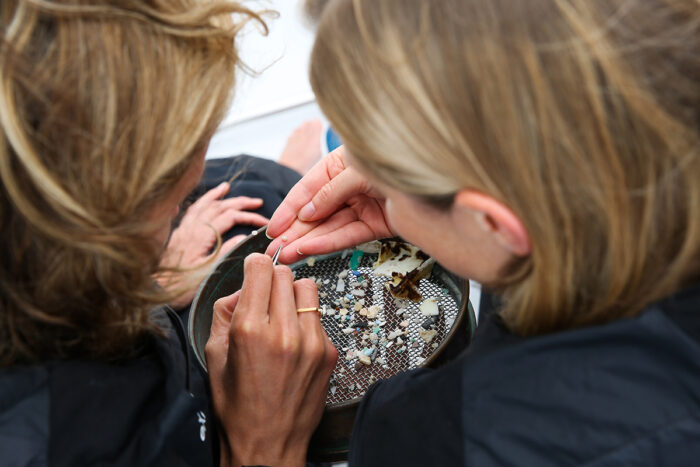
When I join eXXpedition and sail some 2000 miles through the Pacific Ocean, I will be taking part in groundbreaking scientific research on board this floating laboratory to help build a comprehensive picture of the state of our seas. I will also be helping to unravel how we got into this mess and how we can help shift our mindsets towards a more sustainable, a more balanced, future which encourages progress to a more regenerative system. The worldview of the peoples who inhabit the countries past which I will be sailing may well help us to find some of these solutions.
***
The eXXpedition Round the World voyage, which sets sail from Plymouth, UK on October 8th 2019, will sail through some of the most important and diverse marine environments on the planet. This includes crossing four of the five oceanic gyres, where ocean plastic is known to accumulate, and the Arctic on board 73ft sailing vessel S.V. TravelEdge. Under the directorship of award winning ocean advocate Emily Penn, 300 women will join the research vessel as crew over 30 voyage legs to journey more than 38,000 nautical miles. Follow news and updates via #eXXpedition @exxpedition on Twitter / @exxpedition_ on Instagram /eXXpedition on Facebook
I am looking for sponsorship and donations towards my participation in this groundbreaking voyage. Please see more information here – I am very grateful for any support.
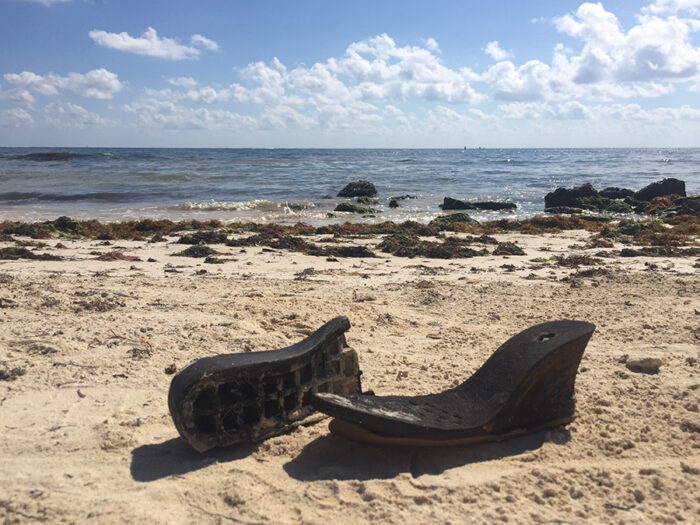
Header photo: Soraya Abdel Hadi/eXXpedition
Microfinance is based on the philosophy that even very small amounts of credit can help end the cycle of poverty. 70% of the world’s poor are women, and 80% of the world’s garment workers are women. Microfinance organisations typically lend to women, not only because they are considered a good investment as they are more likely to repay their loans, but also because lending to women brings with it a raft of social benefits for the women, their families and the wider community.
Microcredit has its advocates and its critics. Fashion Revolution will shortly be embarking on a year-long project in collaboration with MFO, Micro Finance Opportunities, and BRAC. In preparation for our work, I started to read more about microfinance and I also booked a tour with Envia in Oaxaca, Mexico so I could hear stories directly from the beneficiaries of microloans.
Advocates of microfinance include former Chief Economist at the World Bank, Joseph Stiglitz, author of Making Globalisation Work. Stiglitz sets out the importance of community involvement in development projects. He says that the microfinance model pioneered by Grameen in Bangladesh is successful because it addresses the needs of the communities which it serves. Their loan schemes work because groups of women take responsibility for each other and support one another in the loan repayment process.
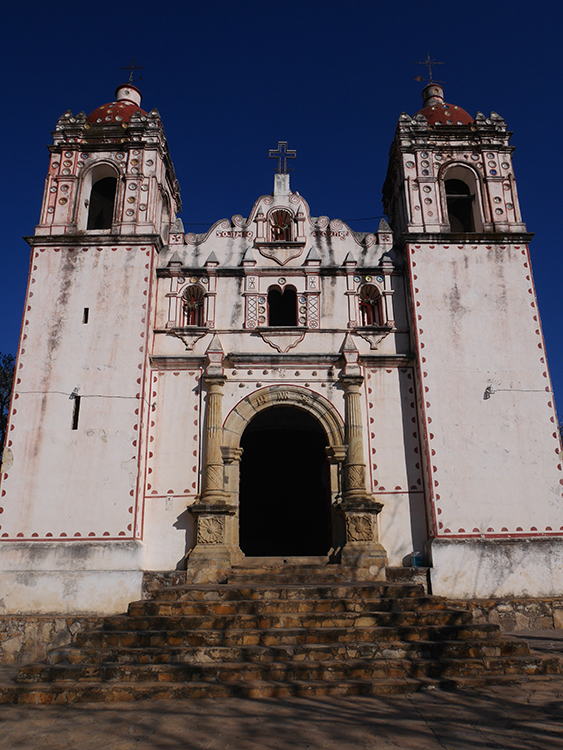
But microfinance has its critics as well. Ha-Joon Chang, author of 23 Things They Don’t Tell You About Capitalism says ‘If effective entrepreneurship ever was a purely individual thing, it has stopped being so at least for the last century. The collective ability to build and manage effective organizations and institutions is now far more important than the drives or even the talents of a nation’s individual members in determining its prosperity. Unless we reject the myth of heroic individual entrepreneurs and help them build institutions and organizations of collective entrepreneurship, we will never see the poor counties grow out of poverty on a sustainable basis.’
Chang illustrates the problem with an example of a Croatian farmer who buys a cow on microcredit. This farmer has to sell the milk from the cow, even if the bottom is falling out of the local milk market and prices are plummeting because hundreds of other farmers have taken out loans and are selling more milk. It is impossible for the farmer to turn himself into an exporter of butter or cheese as they don’t have the technology, organisational skills or capital. ‘What makes rich countries rich is their ability to channel the individual entrepreneurial energy into collective entrepreneurship’ says Chang.
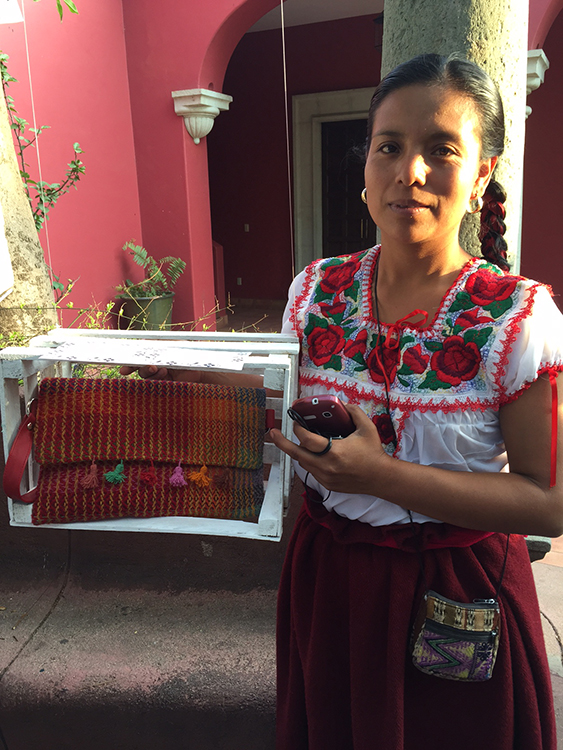
Looking specifically at the Mexican context, a study by Poverty Action Lab into the impact of microcredit for women in Mexico found that microcredit increased access to formal financial services which helped businesses to manage their cash flow and enabled some existing businesses to expand. However, it did not increase household income, business profitability or prompt new business creation. It was found that most of the loans made by microfinance organisations were used to make up for a shortfall in income due to unexpected circumstances such as weddings, or the need to buy medicine for a family member.
I realised quite early on in my research that not all microfinance organisations are set up as not-for-profits. Microfinance is big business in Mexico.
Institutions which started out providing affordable credit to the poor have burgeoned into large commercial institutions. The average interest rate for a microloan in Mexico is 74%, with many loans incurring 200% interest per annum. It’s no wonder that 28% of microfinance borrowers in Mexico hold over 4 loans, and 11% hold over 6 loans, often all with different microfinance institutions. Instead of helping to raise borrowers out of poverty, these loans plunge them into a spiral of debt, from which the only temporary relief is another loan to pay off the existing loans. These rates are partly the result of the decentralised nature of microcredit lending, but institutions also argue that it is because of the high risk of lending to people with no credit history.
But, are the rural poor such a high risk? Joseph Stiglitz says that Grameen Bank in Bangladesh who give small loans to rural women found they had a far higher repayment rate than rich urban borrowers.
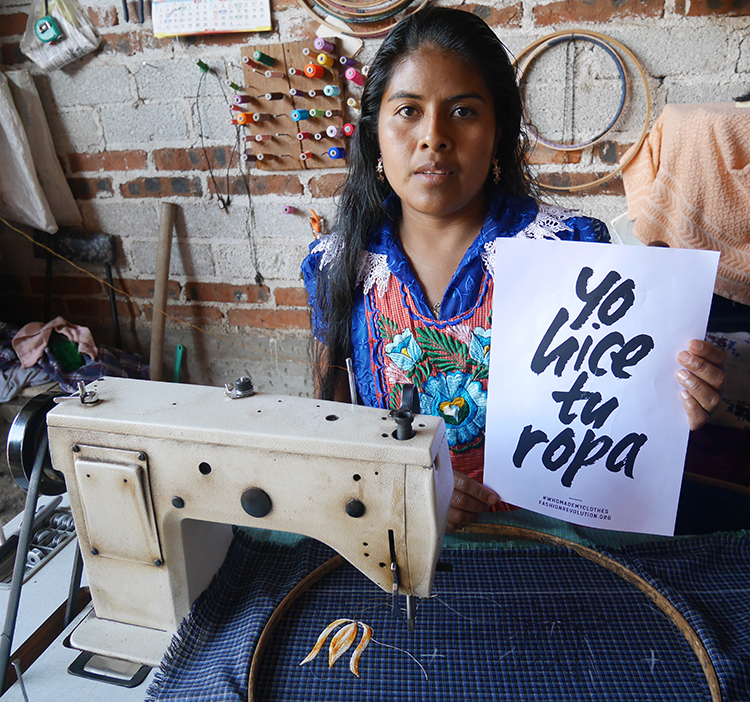
Before visiting the Zapotec community of San Miguel del Valle to meet the recipients of microloans, I asked Envia more about how they operate and what interest rate they are charging to their borrowers.
Envia was founded in 2010 and is currently run by four staff and a team of volunteers. Envia’s model is to provide interest-free loans which are funded through responsible tourism, such as the tour I took to meet the loan recipients. Envia’s tours are, in fact, the no.1 excursion in Oaxaca on Tripadvisor and certainly provide an authentic experience, as well as a unique insight the life and work of rural Zapotec women.
100% of the money raised from tours is put towards loans. Once this is repaid, the money is used for a second round of loans, and finally a third round of loans, education programmes and salaries. So the income from the tours is effectively recycled through the beneficiary communities 2.5 times. 340 women are being supported in six communities, with 2000 microloans distributed to date.
Envia lends exclusively to women as they are far more likely to invest in ways which benefit the family and, by extension, the community. As with the model in Bangladesh, at Envia the women also take responsibility for each other and in order to participate they have to form a group of three.
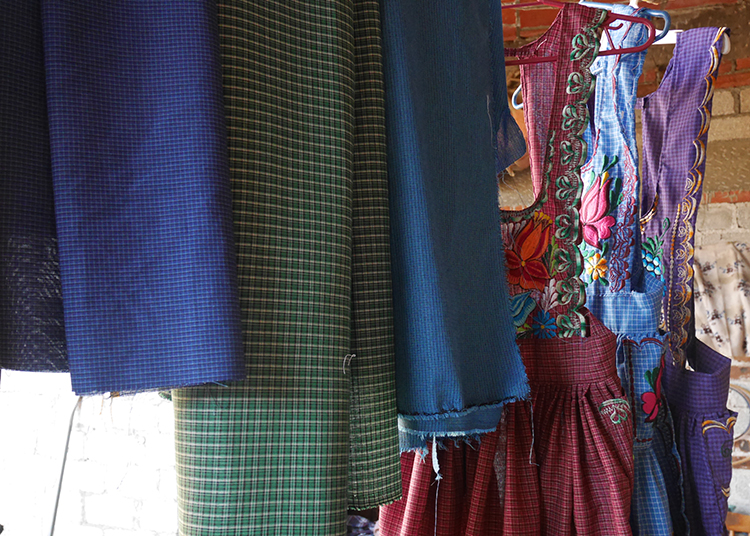
Before receiving the loan, the group of women take an eight part training course over 3 or 4 weeks within their community. This covers issues such as financial literacy, how to separate business and personal money, and how to calculate profit. Each of the three women will receive their own loan of 1500 pesos and must pay it back at either 100 pesos over 15 weeks or 150 pesos over 10 weeks. They can only proceed to the next level of loans once everyone in the group has paid back their loan. The next loan levels are 2500, 3500 and 4500 pesos and the women can decide their own repayment rate.
Women must attend weekly meetings within their communities and pay the loan back on a weekly basis. If, for any reason, they find themselves in financial difficulaties and are unable to repay their loan on a particular week, they are asked to make a minimal 20 peso contribution to show their commitment. If a woman doesn’t attend the weekly meeting, and doesn’t send her money with another member of her group, all three members of the group receive a 20 peso ($1) fine. The carrot and stick approach combining the support of group members with financial penalties clearly works well for Envia as they have a 99% repayment rate.
Another difference between the commercial microloan lenders in Mexico and Envia are the free educational programmes to help the women to grow their businesses. The women must participate in monthly business workshops which teach them about profit, promotion, PR, goal setting, branding and design. Other free classes include health, English, composting, computer skills and menopause – all of which are open to all members of the community.
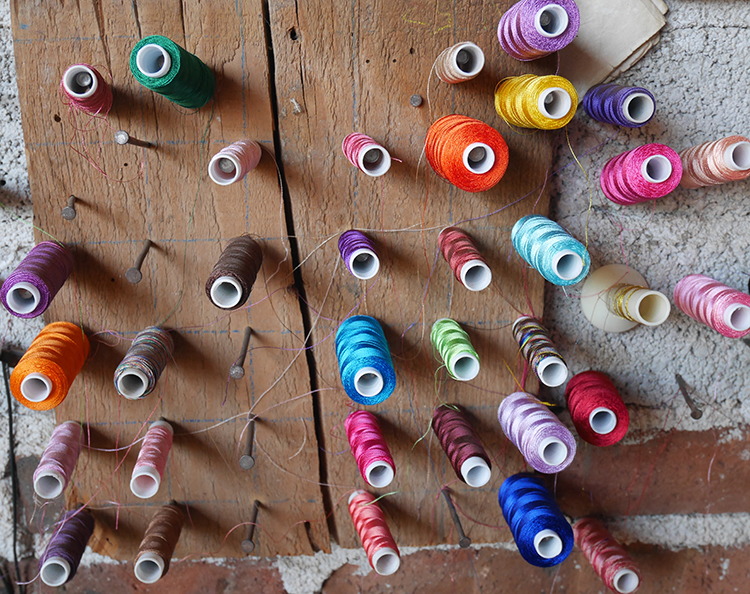
Epifania Hernandez makes aprons. She is in a group with two other women. The first runs a small restaurant in San Miguel del Valle, where I enjoyed a delicious lunch. She is using her loan to buy the ingredients she needs for the restaurant in bulk, thus reducing her costs. The second runs a bakery and is likewise using the loans to purchase ingredients in larger quantities and to visit neighbouring towns to sell her rolls and empanadas. Even though I had just finished lunch, the fresh-out-the-oven bread was impossible to resist and I bought more to take back to my apartment for breakfast the next day.
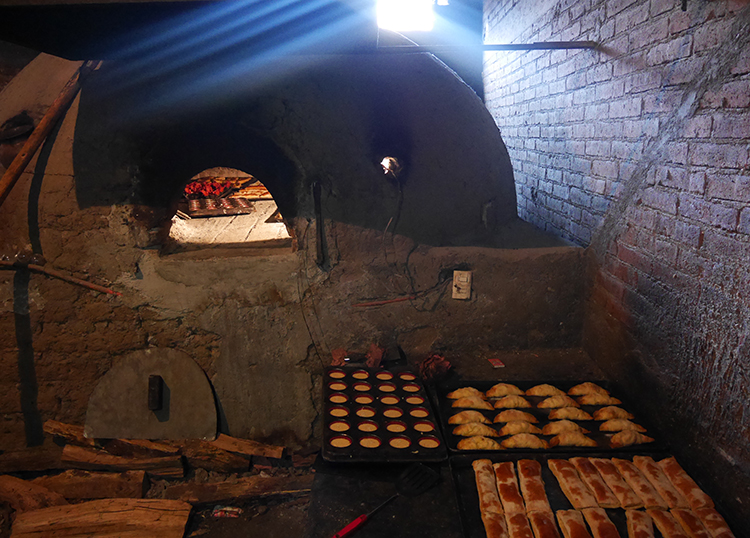
In the Zapotec communities around Oaxaca, aprons are worn every day and form an integral and practical part of traditional dress. Epifania explains that there are fashions in apron design (current hot motifs include peacocks and grapes) and there is a skill in combining apron and dress colours together.
Epifania has been making aprons for 14 years and started work at the age of 14. She wasn’t that interested in school; embroidery was much more enticing. It will take her two to three days to make and embroider each of her beautiful aprons.
Epifania has been with Envia for a year and is now on her third loan which is for 3500 pesos. She uses the money to buy stocks of fabric and embroidery threads. If she has a good stock, people can choose their colour scheme when they order aprons from her, and this is increasing her clientele.
For Epifania, and the other two women I met on the tour, microfinance was working. For all three of the women, it provided a way to expand their businesses whilst reducing their costs as the loans were used to buy raw materials in larger quantities than they would otherwise have been able to afford.
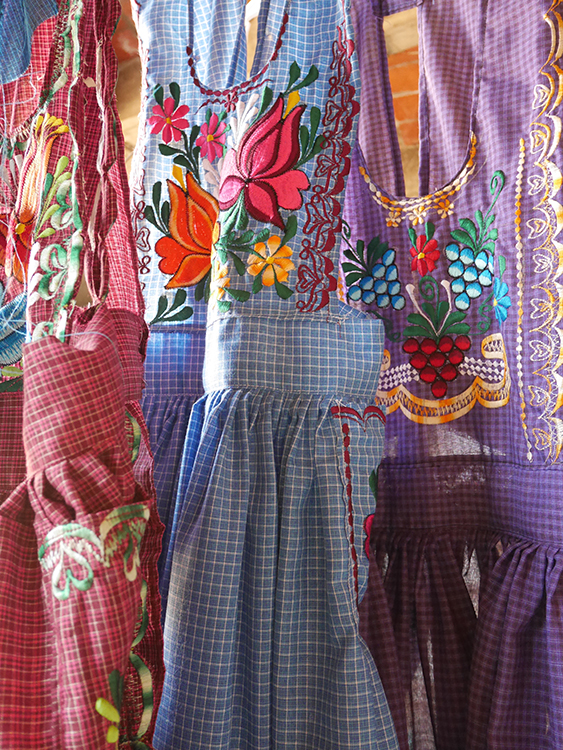
Of course, the zero interest repayment on the loans is not something which many lending institutions, even those with the most benevolent of aims, can replicate. But the high repayment rate through several loan cycles, show that these rural women can be a good credit risk and would probably continue to be a good credit risk with nominal interest rates. The coupling of microloans with business education is another important factor in Envia’s success in helping the women to build sustainable businesses for the long term.
Chang criticises micro finance as he says that, in order to grow sustainably, countries need to channel individual entrepreneurial energy into collective entrepreneurship. However, community-based model of Envia is an example of collective entrepreneurship. Although loans are given individually, the women collaborate with other members of their community and they work together, supported by the educational programme, to explore ways to expand their business and take it to the next level.
Envia was only established six years ago and the long term success of this tourism-financed business model is yet to be seen. However, from an outsider’s perspective it certainly seems to be working, both for the enthusiastic overseas visitors who have the opportunity to understand how rural women live in this region and purchase direct from the producers, and for the 340 women in the Oaxaca region who are beneficiaries of Envia loans.
Administered in a sustainable manner, microfinance can undoubtedly be a powerful instrument of social change and empowerment for women in rural communities around the world. Microfinance can help to increase women’s financial, social and emotional independence, as well as improving their status within both their families and their community.
To separate her passion for natural dyeing from hand weaving, or designing from teaching, isn’t possible for Olga Reiche. All she touches is intricately woven together within her home country of Guatemala and shared far beyond. This spirited woman with a quick smile has been working with indigenous artisans on product development and marketing for over thirty years, producing her own line of naturally-dyed and recycled products, and teaching locally and internationally. Her concern for environmental and artisanal sustainability is a driving force.
Artisan to Artisan
After the devastating earthquake in 1976, Olga worked with Oxfam, an international confederation of countries working together in partnership to alleviate poverty. Olga traveled throughout the country, interviewing artisans and making recommendations for their sustainability. A decade later, she began working with women weavers in the remote Ixil Triangle, the women widowed during the violent 1980-1996 civil war. She opened a shop in Antigua (now closed), to sell their woven goods and helped the weavers with product development, but also discovered local and international markets to sell their wares.
One of the primary groups Olga now works closely with is the weaving cooperative of Ixbalem Ke, based in Samac de Cobán in Alta Verapaz, a remote area in the cloud forest. The women weave a type of intricate brocaded gauze weave, in both white on white pattern as well as natural brown cotton, and naturally dyed threads too. This Mayan weaving style was rapidly disappearing and, with Olga’s assistance, the women weavers are dedicated to preserving this traditional textile.
Learning, Teaching and Sharing
In the late 1980s, Olga met Ana Roquero who had been studying the natural dyes of Latin America and their preservation. It didn’t take long before Olga too was focused on this and over the years she researched and collected data from all over Guatemala culminating in her recent book, Dyeing Plants of Guatemala, (Spanish only), a solid resource on the use of dyes and pigments.
Olga worked with cooperatives in the Lake Atitlán area, mentoring the weavers, developing new designs and products, teaching them how to manage a business, and how to competitively market products in the international arena. In 1995, she started to teach natural dyeing techniques to artisans in this area. She returns here often, especially in the village of San Juan La Laguna where they grow and dye with local plants.
In 2008, she co-founded Artes Textiles y Populares in Antigua, an educational center which hosted programs in the textile arts for national and international groups. After the center closed, Olga ended up with some of the equipment, especially looms, so she set up a home studio. She started backstrap weaving classes complete with a manual so when you’re back home with these warped sticks and threads, you can have the continued guidance of Olga.
She also teaches natural dyeing on a small scale in her studio, growing indigo plants outside her door and working with many regionally sustainable plants. She has recently made pigments for painting by drying the plants and converting them into powder. She calls them The Natural Palette and offers classes on this as well. The next time you’re in Antigua, sign up for a class or bring your group to her studio–she’ll be more than pleased to host you.
The Upside to Recycling
Olga’s work in the field of recycling is inspiring. When Olga first started thinking about recycling, she asked herself two things: What would have a positive impact on the environment, and what would provide work for the weavers? Recycling of things that were already plentiful, too plentiful, met one of her goals. Her design aesthetic is beyond the ordinary—she’s really upcycling. Using discarded corn husks, plastic bags, cassette tapes, and jeans, she designed products that have traction in the market plus they added another line to her own organic cotton and naturally-dyed handwovens, sold under the label Indigo. Who else can mimic ikat weaving using plastic bags? And when an experienced weaver grabbed one of her jeans rag rugs at a recent ClothRoads event and bought it without hesitation, it was a thumbs-up for quality and design.
The net result has provided income to women who are the sole support of the family, allowing them to stay in their village and work. Plus the products provide work to seamstresses and leather workers. It’s a good thing.
Find out more about Fashion Revolution Guatemala
About ClothRoads
Travel with ClothRoads to a world of authentic textile culture. From the rivers of India to the mountaintops of Peru, we go directly to the source to bring you textile stories and the work of skilled indigenous artisans who are dyeing, weaving, spinning, printing and embroidering some of world’s most beautiful objects. When you purchase from ClothRoads, you help us to build and develop new markets that allow artisans and communities, and especially women and girls, to flourish. Learn more about the artisans, and ancient textile techniques on the ClothRoads Blog. https://www.clothroads.com
About Marilyn Murphy
Marilyn Murphy has combined a passion for and knowledge of the textile arts for her entire career. She is the former president of Interweave, a media publishing company focused on the arts and crafts sector where she worked for 16 years. Prior to this, in 1986, she founded the Textile Arts Centre in Chicago, and was the owner of the Weaving Workshop there. She writes a bi-monthly blog for ClothRoads, curates the ClothRoads collection, lectures about artisan sustainability, and volunteers as co-chair for the non-profit Andean Textile Arts.
